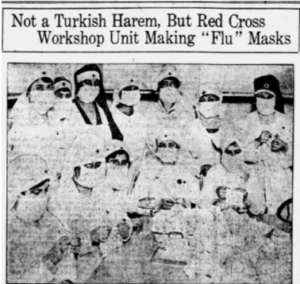With all the talk of a COVID-19 vaccine circulating over the past weeks, we thought it would be timely to look at another vaccine story that captured Americans’ attention and imagination 65 years ago. In the 1940s and 50s, parents lived in fear of polio, and doctors were confounded by it. During the summer months, children were often warned against going to swimming pools, movie theaters, and other areas full of kids.
In the years before vaccines, about 500,000 people around the world died or became paralyzed annually as a result of the illness.[1] In the United States, 1952 saw the worst spike, with 20,000 cases resulting in paralytic polio.[2]
At the same time that the epidemic was reaching such proportions, however, people began to speak hopefully about the prospect of a new vaccine that could protect people, especially children, from the disease. Polio was originally called “Infantile Paralysis” because it affected children so disproportionately. Attempts to develop a vaccine dated as early as the 1930s, but it was almost twenty years later – in 1953 – that it started to look like it could become a reality.[3] The National Foundation for Infantile Paralysis had been building on this original research for sixteen years when it started to look like Dr. Jonas Salk, an epidemiologist from Pittsburgh, had finally had a breakthrough. He had spent years developing his vaccine, which contained a killed version of the virus and was delivered through multiple injections.[4] He tested the vaccine on monkeys and mice, and administered it to his wife and children at the beginning of its trial. In April of 1954, large-scale trials began across the country, including in Omaha. About 4,600 second graders around the city were given the opportunity to receive the virus with parental consent.[5] More than one million people in forty states participated in the trial, which was the country’s first double-blind placebo-controlled study.[6]

Domenico Caporale, an official of the Omaha-Douglas County Health Department, drove to Lincoln to pick up Douglas County’s share of vaccine doses. He is pictured as he unloads boxes of the vaccine upon his arrival back in Omaha, photo taken on May 1, 1954. Image from Omaha World-Herald photo archive courtesy of Douglas County Historical Society.
Jonas Salk’s name has gone down in history, but his was not the only vaccine developed during this decade, nor is it the only one in use today. Dr. Albert Sabin of Cincinnati developed an orally administered vaccine containing a weakened version of the virus. This one was cheaper to produce and easier to distribute on a large scale (this was particularly important for getting it to less-developed countries who had benefited much less from the Salk vaccine, which was in wide use in the United States). Dr. Sabin’s vaccine wasn’t widely used in the United States until after its 1959 trial in the Soviet Union.[7]
In the next few years, gatherings known as “Sabin Oral Sundays” (or SOS events) became common throughout the country – mass vaccination events aimed at inoculating entire communities efficiently. Omaha had its first SOS day in 1962. At one event in May 1962, there were sixty locations around town that served over 380,000 residents of Omaha and Council Bluffs in just one day. There was a “suggested fee” of 25 cents, but no compulsory charge for the vaccination.[8]

A man identified as “Mr. Morton” receives his dose as his children get set to follow at an SOS event at Jefferson School. Image from Omaha World-Herald photo archive courtesy of Douglas County Historical Society.
Some of the conversations we’re hearing today on distribution, access, and awareness are almost like a 60-year-old echo. In 1959, The Omaha Star wrote that, four years after the Salk vaccine had been approved for wide use in the United States, 98 million Americans remained un-vaccinated “at a time when there is ample polio vaccine and the surplus is spoiling in the shelves.”[9] Polio outbreaks in the years following the vaccine’s availability affected people of color and low-income neighborhoods at much higher rates than white and more affluent communities.[10]
For more polio-related items in our collection, see our blog post on Avery Hiddleston, and Omaha boy who was partially paralyzed by polio in the 1920s: http://douglascohistory.org/avery-zeke-hiddleston/
[1] “What is Polio?” Canadian International Immunization Initiative. p. 3. Archived from the original (PDF) on September 29, 2007. https://web.archive.org/web/20070929090612/http://www.immunize.cpha.ca/english/consumer/consrese/pdf/Polio.pdf
[2] “Poliomyelitis Vaccination in the United States.” Institute of Medicine Vaccine Safety Forum. https://www.ncbi.nlm.nih.gov/books/NBK231547/
[3] Hickok, Kimberly. “Who Invented the Polio Vaccine?” LiveScience. June 1, 2020. https://www.livescience.com/polio-virus-vaccine.html
[4] “Whatever Happened to Polio?” National Museum of American History, Behring Center (Smithsonian Institution). https://amhistory.si.edu/polio/index.htm
[5] Sullivan, Robert. “What About this Polio Vaccine?” Omaha World-Herald. April 18, 1954, p. 78.
[6] Hickok, Kimberly. “Who Invented the Polio Vaccine?” LiveScience. June 1, 2020. https://www.livescience.com/polio-virus-vaccine.html
[7] https://history.nebraska.gov/blog/what-happened-when-million-nebraskans-drank-polio-punch
[8] “Cups, Droppers and Spoons Used: More than 380 Thousand Receive Sabin Vaccine.” Omaha World-Herald. May 28, 1962. p. 25.
[9] “98 Million Americans Have Not Made Use of the Salk Vaccine.” The Omaha Star. April 24, 1959. p. 1.
[10] “Important to You.” The Omaha Star. August 7, 1959. p. 4.
